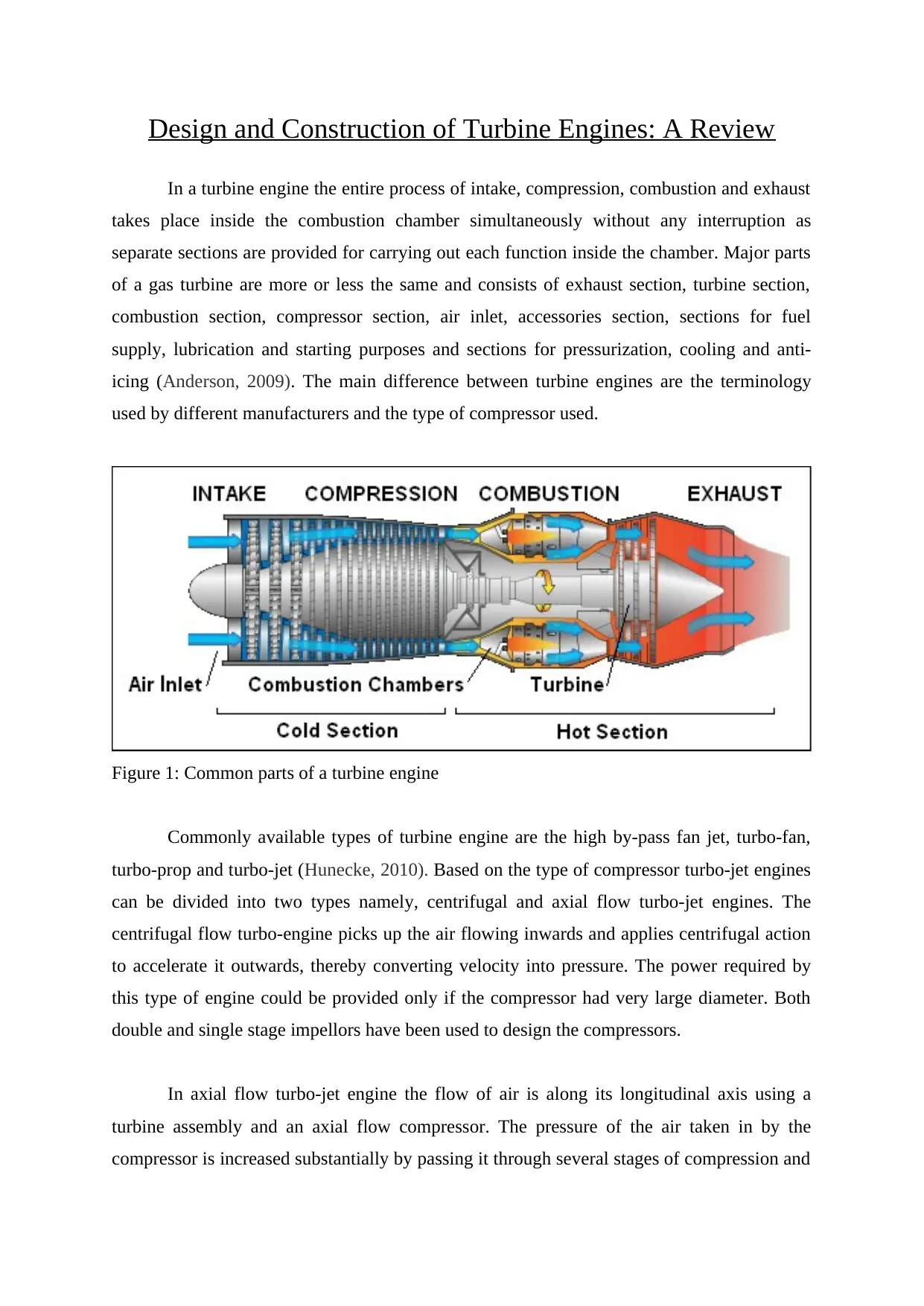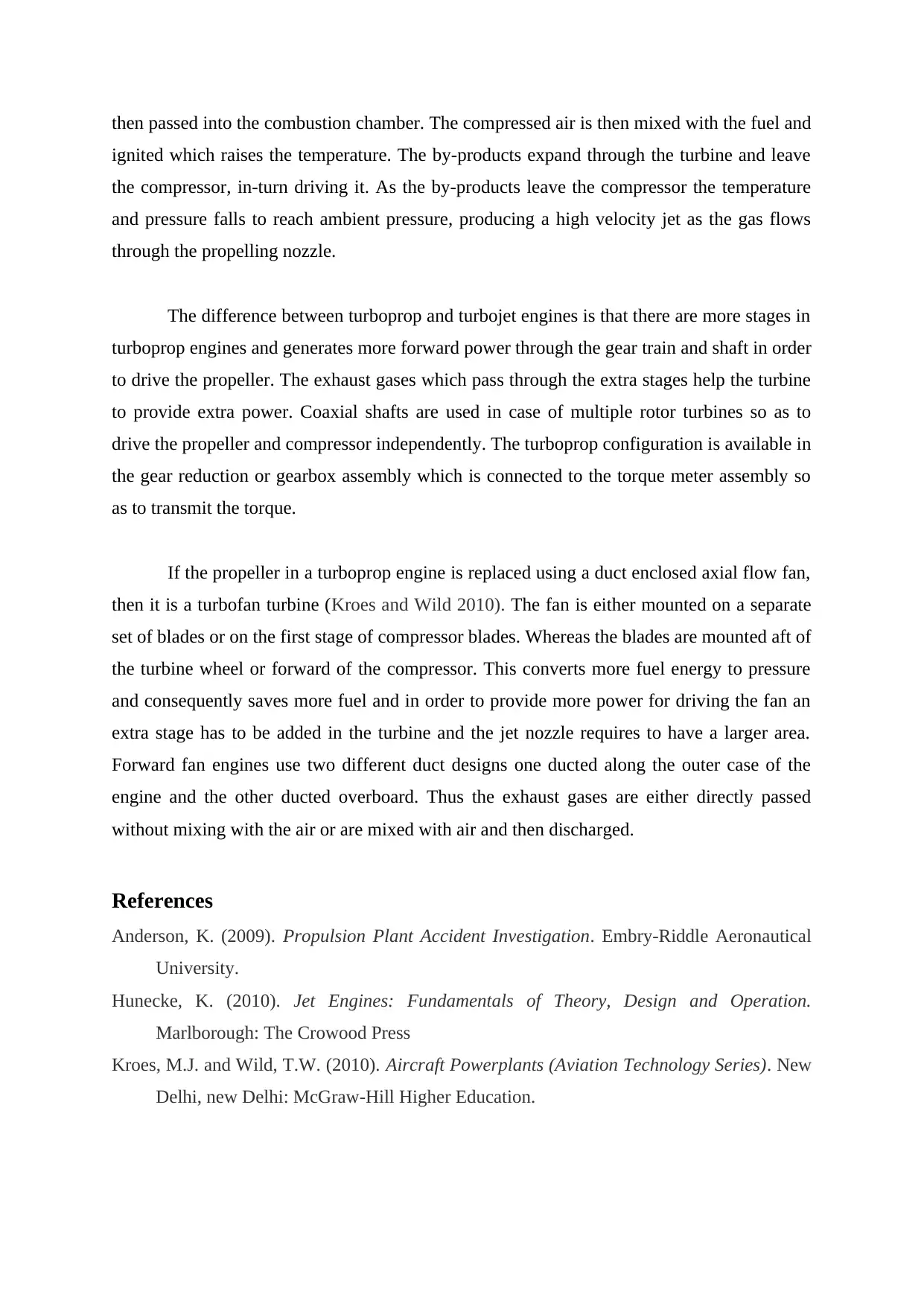Mechanical Engineering: Turbine Engine Design and Construction
VerifiedAdded on 2019/11/14
|2
|676
|309
Report
AI Summary
This report provides a comprehensive overview of turbine engine design and construction, covering various aspects of the process. It begins by outlining the fundamental components of a turbine engine, including the combustion chamber, compressor, and turbine sections. The report then differentiates between various types of turbine engines, such as high by-pass fan jet, turbo-fan, turbo-prop, and turbo-jet engines, emphasizing the differences in their designs and functionalities. A detailed analysis of centrifugal and axial flow turbo-jet engines is presented, highlighting the operational principles of each type of compressor. The report further explores the differences between turboprop and turbojet engines, including the use of coaxial shafts and gear reduction assemblies in turboprop designs. Finally, it discusses the design of turbofan engines, including the placement of the fan and the resulting fuel efficiency improvements. References to relevant research papers and textbooks are included.
1 out of 2







![[object Object]](/_next/static/media/star-bottom.7253800d.svg)